Linkfest #11: Oyster Insomnia, the "Mel Spectogram", and Why Antarctic Researchers Are Developing Their Own Accent
Welcome to the latest edition of the Linkfest! Thank you for being a subscriber; if you’re enjoying it, spread the word – it’s a pay-what-you can signup here; the folks who can afford to contribute help keep it free for everyone else, too. Forward this email to anyone you want.
Let's get to it! Here's the best stuff I've found online ...
1) 🏎 Keita Miyazaki's car-muffler art
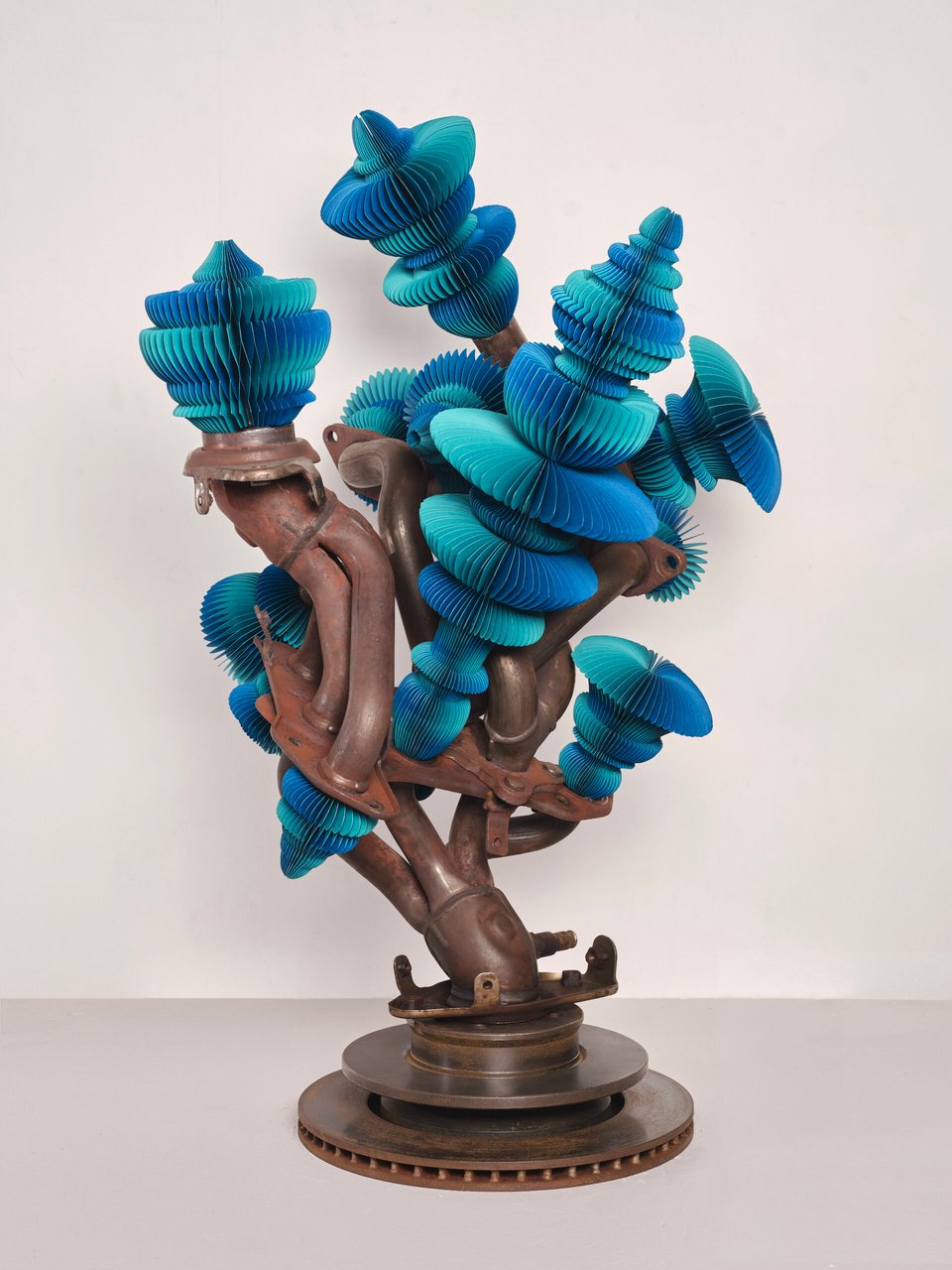
In his latest show Excess of Desire, Keita Miyazaki meditates on car culture by making sculptures from car parts, then ornamenting them with origami-like blooms of folded paper.
The result feels like a fusion of Mad Max and sea anemones. As Colossal writes ...
Miyazaki articulates ideas around functionality and decay by welding together fragments of mufflers and engines that no longer operate for their intended purposes. He incorporates carefully selected parts, such as specialized mufflers that were produced illegally in the 1980s and 1990s, which rose to popularity because they could increase the car’s noise level and produce a specific sound.
Lots more pictures of Miyazaki's work at his Instagram account here.
2) 🥶 Antarctic residents are developing a new regional accent
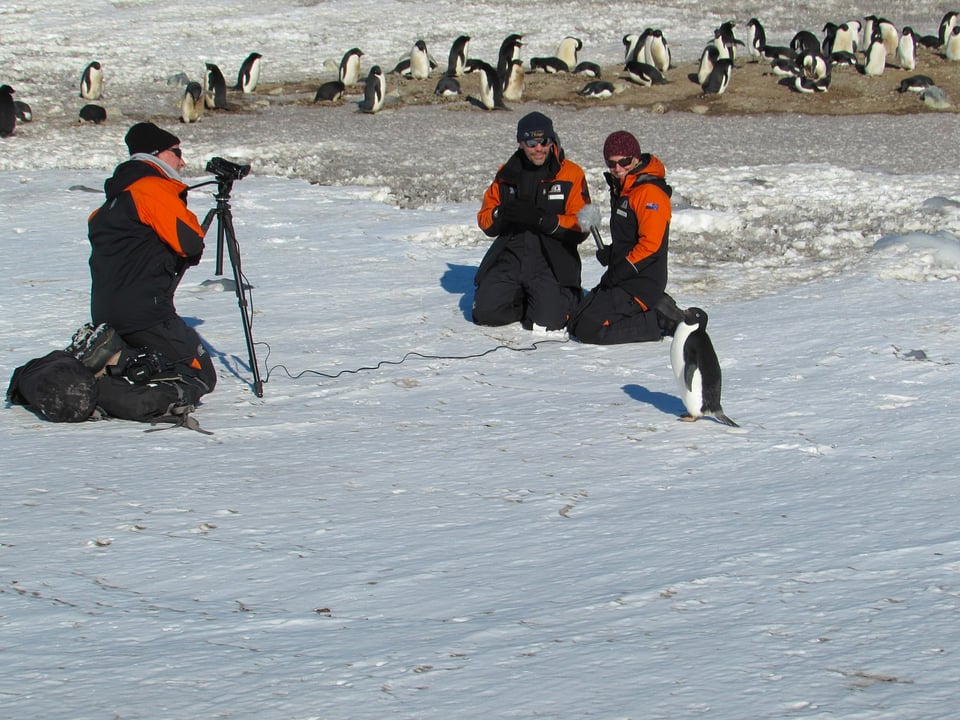
When you live in Antarctica, you're isolated with only about 1,000 other people during the long winter. That means that you spend a lot of time in their company. And it turns out that these people are developing brand-new accents. Subtle ones, but detectable!
This came to light in the scientific paper "Phonetic change in an Antarctic winter" (free to read here). The researchers took a handful of Antarctic winterers -- from countries ranging from Germany and the UK to England the US -- and recorded them every six weeks, for five sessions. They found that their pronunciations shifted slightly, converging on a fascinating new accent. As Tom Hale writes in IFL Science ...
One of the main shifts was how the study group started pronouncing their words with longer vowels. Furthermore, there was evidence of linguistic innovation in the group. Towards the end of their stay in Antarctica, the residents were pronouncing “ou” sounds – like those found in the words “flow” and “disco” – from the front of their mouth, as opposed to the back of their throats.
I wonder if the same thing has ever happened on the International Space Station?
3) 📊 Harry Styles and the "Mel Spectrogram"
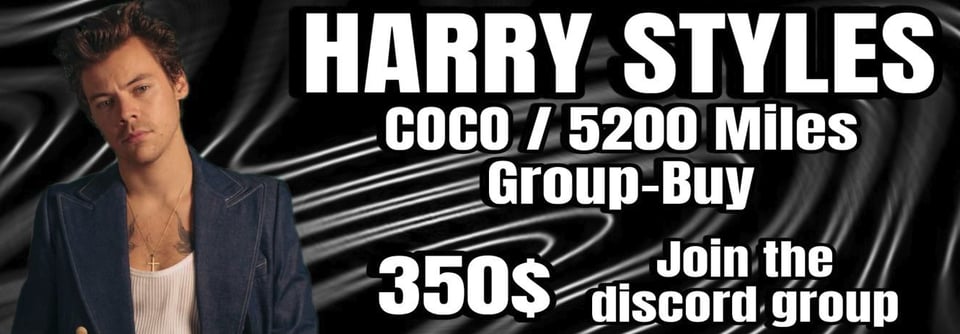
Apparently the Harry Styles fandom is arguing hotly over whether some recent "leaked" tracks are real or AI-generated.
Over at 404 Media, Jason Koebler has written a deliciously-reported take on what's going on. There's tons of cloak-and-dagger intrigue: Someone raised money from Harry Styles fans with the promise that they'd leak secret unreleased tracks by Styles and One Direction ... but when the tracks came out, fans divided into two camps as to whether they were legit or a creation of AI voice-duping.
The intrafan hostilities are fascinating enough. But my fave part of the story occurs towards the end, when Koebler sends the track to Deep Media, a deepfake-detection firm, to try and settle the question: Are the tracks real?
It turns out one of the techniques Deep Media uses is the "Mel Spectrogram". That's a way of analyzing sound that takes advantage of the fact that humans are better at distinguishing between different frequencies when those frequencies are low; as the frequencies get high, they sort of blur together in our perception. There's a great Medium post here that describes the discovery of the "mel scale" back in 1937 -- and here's what the Mel Scale looks like ...
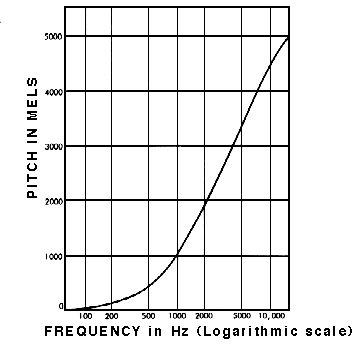
It turns out the Mel Spectrogram is key to analyzing whether a singing voice is AI-generated or not. It's a big part of how Deep Media analyzed those Harry Styles tracks.
The result? Deep Media's CEO says the tracks are probably legit. As he explained to Koebler, there are two big "tells": Vocal fry and shortened vowels ...
"A lot of AI systems will have vocal fry, and just like poor quality audio components to it. That wasn't present [in these two clips]. Now, the vocal fry can be removed using post-processing techniques. So it is possible that you know vocal fry is there, but it was removed in post.”
“The second thing that is really hard to remove is the cutting off of vowels,” he added. “Like oftentimes in AI-generated singing and AI-generated speech, if a word ends in a vowel, that last vowel will be kind of cut off from the word. And we're talking about a minor amount. It's like .025 seconds, but you'd still be able to see it in the MEL spectrogram and visualizing these MEL spectrograms, they don't appear to be cut off.”
4) 🎨 The "Blockface" print-making kit
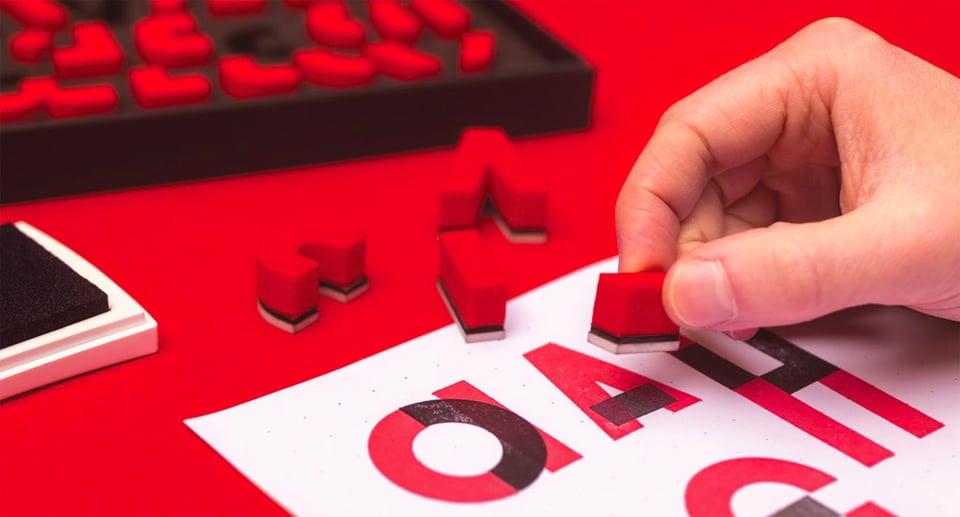
Artist and designer Will Mower has created this fun kit of stamps that can be used to create your own custom blockprint fonts. It has a very Bauhaus, modern aesthetic, but it's also surprisingly flexible, letting you make prints like this ...

... or even just non-font graphic designs, as here ...
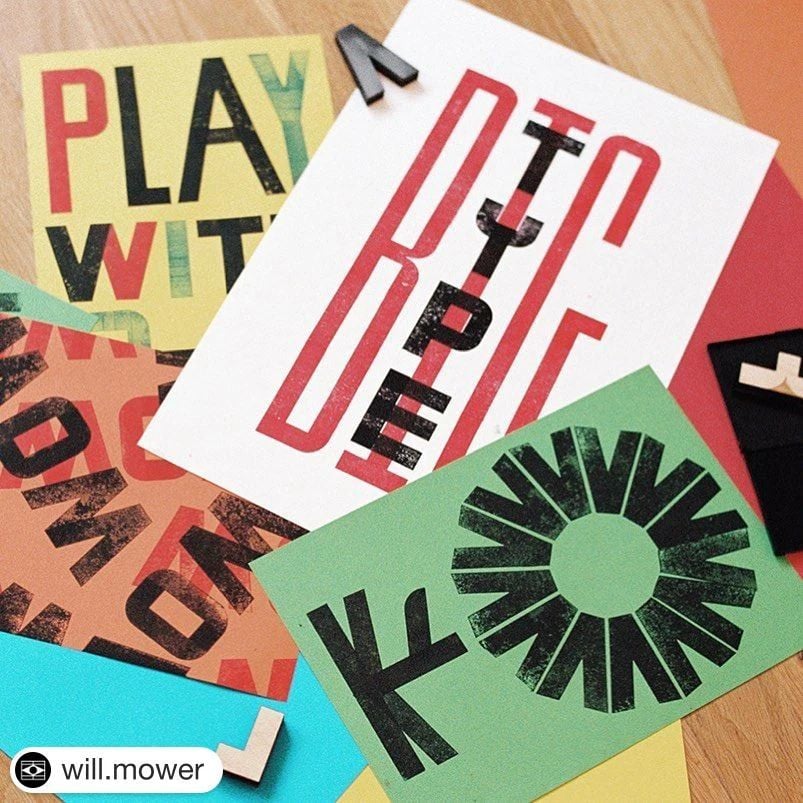
Plenty more images on the Blockface Instagram acccount here. Mower is currently running a Kickstarter project to create the first batch of Blockface kits, and I'm gonna sign up for one!
5) 👀 Surfing sideways through images on "River"
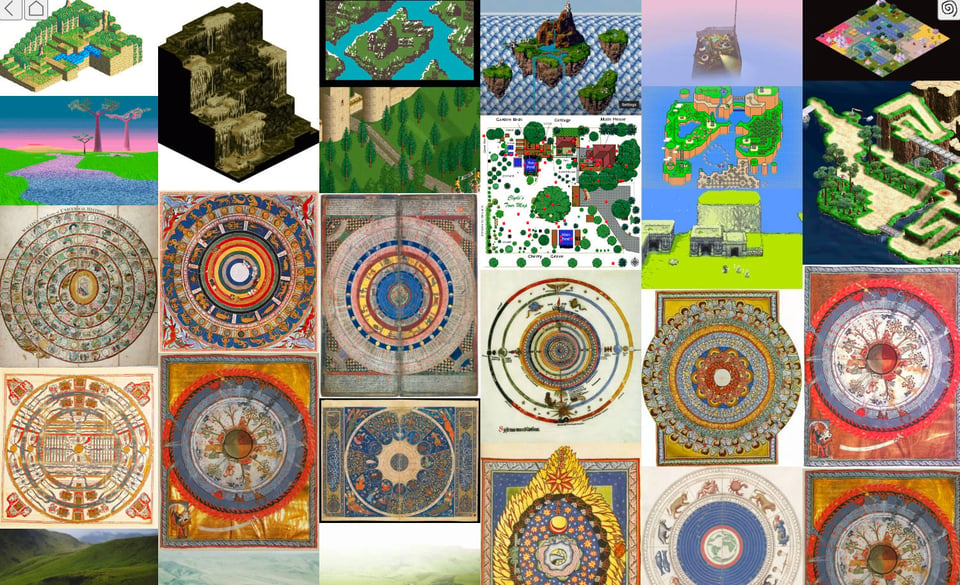
"River" is a fascinating little web app made by Max Bittker.
It starts by showing you a grid of little images of mandalas -- that's it, above. When you click on any image, the app repopulates the page with images that are related to the one you clicked on. To do so, it uses CLIP, a neural network that connects words and pictures.
The act of clicking around on River thus becomes a way of exploring how CLIP "thinks", as it were. It finds images that are all generally connected to the one you clicked on -- either by content or by style, or perhaps some alchemical combo of the two? So I start by clicking on a mandala, and it gives me more mandalas ... but one of them is a kind of black-and-white, so I click on that. Then I get a bunch of screenshots of black-and-white glyphs; click on those, and I'm given a screenful of what look like textbook screenshots. And so on and so on! It's really mesmerizing. It's like surfing sideways through imagery, visual association by visual association.
Every so often, though, I'd get stuck in a blind alley. At one point, I'd clicked on a yellow smiley, and the whole screen was filled with yellow smilies ... such that no matter what I clicked, I only got more yellow smilies. I couldn't break out. Finally I clicked on a smiley that seemed to be smoking a cigar, and the brownish aspect of that image led me (I guess) down a "brown" pathway until I was getting images of dogs and more varied stuff.
It's pretty fun and weird -- give it a whirl.
6) 👮 TSA's rules for lightsabers
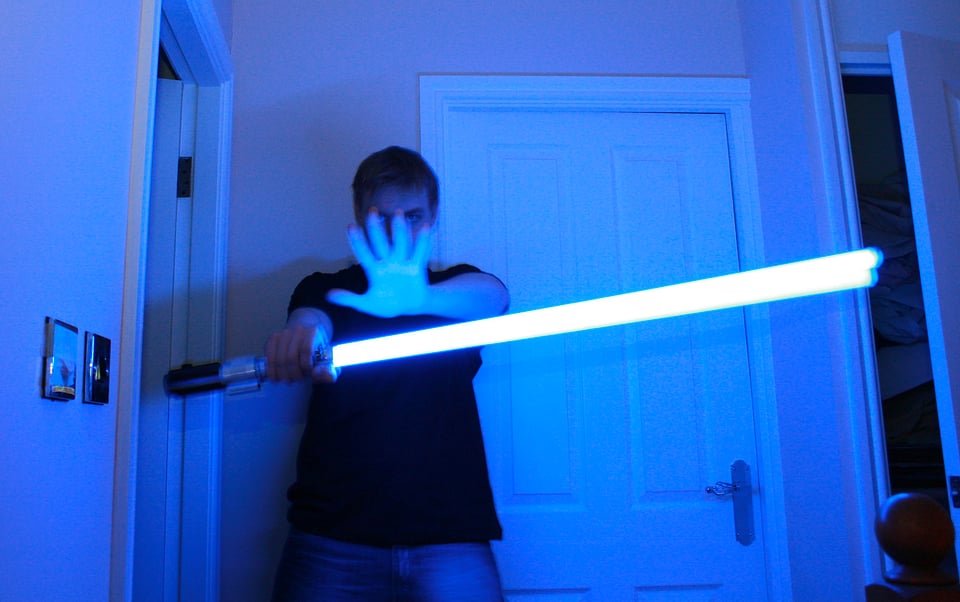
I was writing the last Linkfest and wasn't sure whether light saber was one word or two. So I googled it, and found that there's ...
Carry On Bags: ✅ Yes
Checked Bags: ✅ Yes
Sadly, the technology doesn't currently exist to create a real lightsaber. However, you can pack a toy lightsaber in your carry-on or checked bag. May the force be with you.
7) 🔍 The librarian versus the doctor, with "search"

Over at Wired, Elan Ullendorff has written a fascinating essay on how AI-based chat-apps are likely to change the way people search.
His argument hinges on an interesting taxonomy he invented. There are, he points out, two forms of search: One that's represented by the "doctor" mindset, one that's represented by the "librarian" mindset.
The Physician's primary aim is to protect you from context. In diagnosing or treating you, they draw on years of training, research, and personal experience, but rather than presenting that information to you in its raw form, they condense and synthesize. This is for good reason: When you go to a doctor’s office, your primary aim is not to have your curiosity sparked or to dive into primary sources; you want answers, in the form of diagnosis or treatment. The Physician saves you time and shelters you from information that might be misconstrued or unnecessarily anxiety-provoking.
In contrast, the Librarian's primary aim is to point you toward context. In answering your questions, they draw on years of training, research, and personal experience, and they use that to pull you into a conversation with a knowledge system, and with the humans behind that knowledge system. The Librarian may save you time in the short term by getting you to a destination more quickly. But in the long term, their hope is that the destination will reveal itself to be a portal. They find thought enriching, rather than laborious, and understand their expertise to be in wayfinding rather than solutions. Sometimes you ask a Librarian a question and they point you to a book that is an answer to a question you didn't even think to ask. Sometimes you walk over to the stacks to retrieve the book, only for a different book to catch your eye instead. This too is success to the Librarian.
For their first 25 years of existence, Internet search engines functioned as librarians. Their goal was to point us to a resource that we could ourselves ingest and learn from.
But now, Ellandorff observes, search is becoming more like a doctor. ChatGPT and Bing Chat and Google Bard seek to answer our questions directly, without requiring us to look at any sources.
I find this a really intriguing and clarifying way of looking at things. Me, I'm characterologically a "librarian" person; I want to know where my information is coming from. I've tried using the various chat apps to learn things, but in most cases I find it too unsettling to not know the provenance of the answers, particularly given the propensity of LLM AIs to bullshit.
I suspect I'm on the losing side of technological history here, though. A lot of people just want a quick answer that sounds authoritative; they're busy, and have no interest in chasing down a ton of sources. Indeed, it's quite possible that a chat-search engine could give them a better answer than they'd get using a traditional list-of-links search. That's because when a busy or harried (or lazy) person uses a regular list-of-links search engine, they'll probably just click the first link they get, whether or not it's useful. But a good chat-app answer will have synthesized multiple sources.
8) ⏰️ A clock that displays a song mentioning each minute

I love unusual ideas for clocks, and this one's great: Every time you visit it, it plays a song that mentions that particular minute of the day.
I just visited it at 8:21 am, and got the song above!
9) 🛹 The life and death of skateboard tricks

The half-life of a fashion trend can be incredibly brief. In a highly-networked Internet age, a trend can explode, metastasize the planet, then quickly die out.
Over at Jenkem magazine, Lucas Wisenthal writes a fun piece about how skateboarding tricks can emerge from a single video, become must-have stunts in one's repertoire, then vanish -- in a matter of months.
It's a fun read, partly because of the deep dive into gnarled skateboarding lingo ("skaters would sooner ollie into a crook or backside or backside tailslide than frantically wiggle their boards into combinations of slides and grinds"); but my favorite moment is when Wisenthal describes the power an "influential pro" can wield with a single comment:
At one point, an influential pro could also kill a trick single-handedly. In 1997, inspired by Chad Muska and a few others, a good part of skateboarding decided that frontside flips and hardflips should rotate between the legs and look like they’re not flipping at all. I watched dudes get clowned and beat themselves up for doing both properly. But that summer, asked by Thrasher where he thought skating was headed, Caroll said he’d “like to see so-called pros be original…and definitely no more illusion flips: the new pressure flips that don’t even flip, the so-called hardflip.” Driving the point home, he added, “It wouldn’t even be that bad if they named it something else.”
10) ☎️ The unexpected upside of landlines

I haven't had a landline in over a decade; I, my wife, and my two teenage sons each have mobile phones. The situation was similar in the household of my friend Ian Bogost, a philosopher and game designer: He'd gotten rid of his landline years ago, and didn't miss it.
Recently, though, Ian tried adding a landline phone back into his kitchen. This was partly because he wanted his 9-year-old, who didn't have her own mobile yet, to be able to make and receive calls.
But once the landline was installed, Ian discovered something fascinating: It has a second-order social effect, on the entire household.
Phones used to belong to a household; now they’re personal property. A shared line was irritating when it was the only option: Teenagers (or modem-connected computers) might tie up the phone for ages, a few handsets scattered throughout the house limited privacy on the phone, and anyone could fill your home with telephone bells at any time, day or night. But in exchange, your house got a common line in and out. In a small but important way, it emphasized the household as a unit, one with common interests, a hub through which contact with its members could be made.
Fun piece -- check it out!
11) 💎 A final, sudden-death round of reading material
Oyster insomnia. 💎 When Heineken made square beer bottles that could be used as bricks to build housing. 💎 Scaled-up matches. 💎 "Sturdy, Whitefoot, Hardy": What medieval people named their pets. 💎 "Our AI-powered tools have detected that you are featured in sexually explicit content that was uploaded to our platform." 💎 Microsoft Paint has layers now. 💎 A room at MOMA wallpapered with chocolate. 💎 The "periscope lens" emerges in smartphones. 💎 Surge pricing for pubs. 💎 "Why Voice Failed As A Platform" 💎 Hexagonal plastic cups for beer pong. 💎 A single-button keyboard. 💎 Footage of a news station in 1967 switching, live, from black-and-white to color. 💎 Wristwatch made from "recycled ocean-bound plastic". 💎 3D printed Rickrolling QR code. 💎 The possibility of burning iron instead of fossil fuels. 💎 "Conway's Game of Chess is a chess game where the pieces can procreate and die." 💎 A hexadecimal clock counting down to the Year 2038 Problem. 💎 The smart pocketwatch. 💎 Gopher, running on an early-2000's Fossil Watch PDA. 💎 The comp.sys.sinclair crap games competition. 💎 The Port Talbot UFO Investigation Club. 💎 An all-terrain electric unicycle. 💎 Gin drinking in England, 1700-1850. 💎 A font made of Mediterranean tiles. 💎 Box for stenciling to-do lists on post-it notes. 💎 Was this Hilda Klint painting hung upside down? 💎 Doom, running on a keycap.